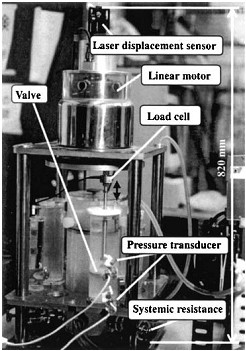Although the primary concern is to mimic the function of the
native heart valve, there are secondary considerations that need to be
addressed as well. The secondary
considerations revolve around minimizing unwanted side effects that result from
the design of the prosthetic valve.
- Biocompatibility
– Materials used must not provoke an immune response. This means presenting infection as well
as thrombosis or calcification that may impede the operation of the new
valve.
- Durability
– Heart valves are expected to work continuously for several years and are
implanted though a major invasive surgery.
For these two reasons, we cannot afford to have valves fail
prematurely (see figure 4).
- Manufacturability
– The construction of the valve should be feasible and consistent. This requires us to consider materials
that have high yield rates. The
design must be able to be constructed reasonably (see next consideration).
- Cost –
The cost of the valve must be reasonable and competitive with similar
products. Even if all of the above
design considerations were perfectly met, there would be resistance in the
marketplace if the cost of the valve were too high.
|

Figure 4: An accelerated heart
vavle wear tester. To ensure that heart valve designs can
withstand the constant forces and motion, machines such as this are
used to simulate the number of cardiac cycles the valves are expected to
endure through their expected lifetime. Thus, several years worth
of valve activity are compressed into a few weeks or months. |
